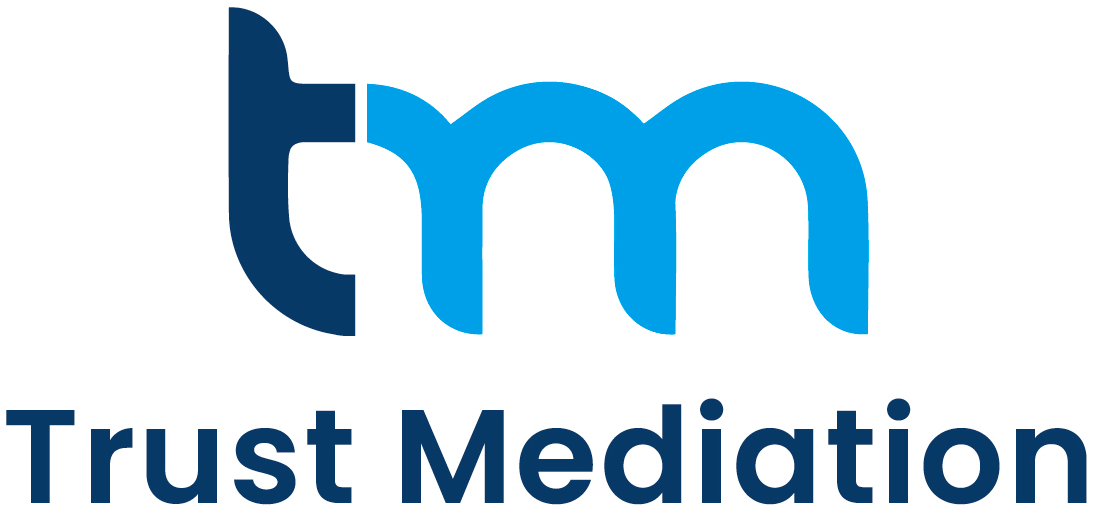The Mediation Process Explained
We know that your time is precious. You do not want to spend a whole day out of the office if it is not necessary.
The party proposing mediation may at the same time nominate one or more suitable mediators or nominate a medition organisation such as Trust Mediation to appoint a mediator. The mediator is selected by agreement between the parties just like a joint expert would be. A party that unreasonably refuses to agree to mediate may be penalised in costs at the end of the claim.
What we can do for you:
That is why we offer a fixed fee four hour mediation as well as our 8 hour model. It is a perfect solution to most needs, because all our mediators are not only experienced in mediation, but also have practical knowledge in the specialised field of the claims.
What you get:
Process:
The parties will nominate the mediator from Trust Mediation’s panel of specialist personal injury and clinical negligence mediators. Alternatively, you can ask Trust Mediation to appoint the mediator.
15-step quick overview:
1. Pre-Mediation Procedure
2. Propose mediation
3. Parties agree on the mediator
4. Mediator instructed, date and venue agreed
5. Agreement to mediate and invoices sent out
6. Mediator has confidential calls with lawyers
7. Mediation bundle prepared
8. Parties exchange position statements
9. Meet the mediator
10. Mediator meets the other side
11. Joint opening meeting if the parties agree
12. Private discussions with the mediator
13. Mediator private discussions with other side
14. Start exchanging offers to settle
15. Reach agreement
The parties agree which mediator to use. The mediator is instructed, and the mediation date and venue are agreed. One firm will usually offer rooms to save on costs.
1. Sign agreement to mediate
The basis of the mediation is contractual and many of the safeguards needed before a mediation can proceed are set out in the Agreement to Mediate. It is therefore essential to ensure that an Agreement to Mediate is signed by all concerned before a mediation commences.
2. Confidential discussions
It can often be very useful for the mediator to have a pre-mediation confidential discussion with representatives of each party prior to the mediation – usually after reading the mediation bundle. In cases of high emotion, it can also be useful for the mediator to have a pre-meeting with the claimant and or the claimant’s family.
In some cases, it may be appropriate to have a joint telephone conference between the mediator and a representative on each side to discuss matters such as:
- any outstanding disclosure
- exchange of position statements
- up to date schedule exchange
- who will be attending the mediation
- disabled access to the building when required
3. Prepare mediation bundle
4. Position Statements
Most mediators will ask each party to prepare a position statement. You can send an “open” position statement, which will be sent to the mediator and the other party or a confidential position statement, for the mediator’s eyes only, or both.
An open position statement will usually include some or all of the following:
- The background of the dispute.
- The main issues still in dispute and your view on those issues and your thoughts on the
- other side’s views.
- The history of any offers and counter offers.
- Your suggestions as to how the dispute might be resolved.
This position statement is not only for the benefit of the mediator. It provides you with a means of communicating with the other party and is the first step of your task in persuading the other party to your point of view. It should be crafted accordingly and disclosed in sufficient time for it to have an impact. You normally exchange position statements with the other side.
The purpose of a confidential position statement is to provide the mediator with further useful information about the dispute, or the people involved, which you do not wish to share with your opponent at this stage. Tell the mediator of your views about the barriers to settlement, what you think the mediator will need to concentrate on and why.
5. Meet the mediator:
Nothing said to the mediator in your private room is passed on to the other side without your client’s permission. Run through the essential features of mediation – that it is voluntary, confidential, without prejudice and only binding if the parties sign a written agreement (often a Tomlin Order). A mediator is likely to go into more detail about this in the claimant’s room for the benefit of the lay client.
6. Mediator meets with other side
This is a good opportunity to review your negotiation strategy which, as a minimum, should include:
- where you intend to start the negotiation
- where you would like to end the negotiation
- how you are going to move between those two positions.
7. Opening joint session
The mediator will usually invite each side to address the other side – the “opening statement”. This is often delivered by a legal representative but in personal injury claims it is not uncommon for the claimant themselves to speak. Often, they will take this opportunity to explain what impact the injuries have had on their lives. The claimant’s authenticity can have a considerable impact on the defendant’s assessment of the case.
This is an important opportunity for the claimant to tell their story and to be listened to. It distinguishes mediations from joint settlement meetings because of the claimant’s involvement.
The mediator will give the parties the opportunity to ask questions directly. The meeting will last as long as there is a useful exchange of information. Either party is free to leave the meeting and return to their private room at any time.
The meeting may end with the mediator and parties identifying how best to use the time available.
8. Private session with the mediator
This is an opportunity for the mediator to discover more about the case, what your client wishes to achieve and how you think it can best be done. You should identify what information you still need from the other side and discuss with the mediator the best way of getting it – in further joint sessions; meetings with the lawyers or the mediator shuttling between rooms.
9. Repeat until agreement has been reached
The mediator will go from one room to the other speaking privately and confidential with each side. Often the parties have requests for further information or clarification about a matter. The mediator may suggest further joint sessions, either with everyone or possibly just with the lawyers, to deal more efficiently with this further exchange of information.
At some point the parties will need to start making and exchanging offers. They can ask the mediator to deliver their offers or they can do it themselves. The offers must be clear about what they include and should be specific about costs.
10. Reach and sign agreement
In issued claims the lawyers will usually prepare a Tomlin Order, in unissued claims a compromise agreement would be prepared. Draft agreements should be brought to the mediation to save time drafting once a settlement has been reached. The claimant lawyer and the insurer will usually want to settle costs as well as damages and the mediator will assist with this negotiation too.
After the mediation
In cases where settlement is not reached on the day the mediator will often be prepared to work with the parties, by telephone, to see if final resolution can be reached soon afterwards. However, 80% of the claims referred to us settle on the day or very shortly afterwards.
Mediation steps:
1. nominate mediator
2. agree mediator
3. create date and venue agreed
4. send out agreement to mediate (contract between parties and mediator, what to achieve)
5. agree mediation bundle (what they expect from the mediator)
6. exchange positions
7. confidential discussion with solicitors
8. mediation
9. meet the mediator
- You can bring somebody along to the mediation to support you. It may be your partner, a relative, a friend or a colleague for example.
- The mediator will make sure you are comfortable and give you time to get a drink, settle in and answer any questions you might have.
- The mediator will run through the procedure for the day so that you know what will be happening.
- You can use this private room throughout the mediation. Anything you say to the mediator in here is confidential.
10. mediator meets other side
11. joint meeting
- This is up to you and you do not have to do it. If you are concerned about it you can talk to your lawyer and/or the mediator
- It can involve you, your supporter, your lawyer, the mediator, the other party and their lawyer. The mediator will give each side the chance to talk about why they have come to the mediation and what they hope to achieve.
- This is your chance to have your say. You can tell the other side directly about how the injuries have affected you and your family.
- You also get the chance to hear directly from the other side which may help you understand the problems they have in settling your claim. You will be given the chance to ask questions or your lawyer can do this for you.
- The meeting will last as long as it takes each side to get the information they need from the other side to help them understand the case better.
- You can end the meeting at any time and return back to your private room.
12. private meeting with mediator
- The mediator will join you, your supporter and lawyer in your private room.
- Remember, anything you say to the mediator in this room is confidential.
- The mediator will discuss what the other side said in the joint meeting. You can talk to the mediator about anything you are concerned about and what needs to happen for the case to be settled.
- You might want to go into more details about how the accident happened or how the injuries are affecting you, your family, your work and hobbies.
- You can talk to the mediator about what is important to you.
13. private talk with other side
14. Exchange offers to settle
- The mediator will go back and forth from your room to the other side’s room speaking to each side privately.
- The mediator will talk to you about offers you might want to put forward to the other side and tell you about any offers they have made.
- You can always ask the mediator to leave the room if you want to discuss an offer with just your supporter and lawyer.
- The mediator may talk to you and your lawyer about what the other side say are the weakness of your case.
- This process carries on until you and the other side reach an agreement. There may be many offers before a settlement is reached.
15. Reach and sign agreement
- When both sides reach an agreement this is written down and signed to create a legally binding agreement.
- In a compensation claim it will say how much you will be paid and when you will receive your money.
- This is the end of the process. You can go home.
- You may want to say goodbye to the other side before you leave, like most things in the mediation process, it is your decision.


